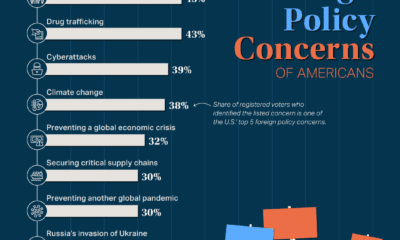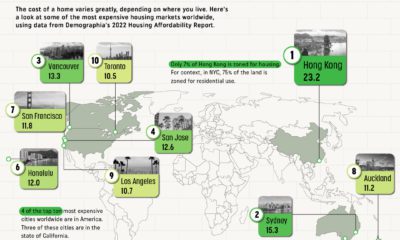In particular, CEOs and managers can often feel isolated from their peers, and therefore crave a greater sense of community and belonging. This lack of social connection can have a detrimental impact on both them and their team—putting the future of their company at risk.
Leading in a Hybrid World of Work
This infographic from bestselling author Vince Molinaro dives into the ways you can build a strong community of leaders in your organization, enabling you to more successfully execute on strategy, drive growth, and deliver results.
Download Dr.Vince Molinaro’s Community Builder Ebook Today
The Critical Need for Leadership Communities
In today’s world, many leaders have been conditioned to work and lead in a way that is individualistic and hyper-competitive, which leads to problematic outcomes including:
Limiting innovative ideas Causing overwhelm and stress Limiting diversity and a sense of inclusion Promoting a macho culture Creating heroes and zeros in organizations
This outdated model breeds a weak leadership culture. Even though leadership expectations are higher than ever, very few companies boast a strong leadership culture. In fact, just 15% of companies have the culture they need to succeed. What does a weak leadership look like?
Weak Leadership Cultures
When leaders demonstrate the following behaviors, organizations are at risk of developing a weak leadership culture: When these negative dynamics become apparent, organizations pay a significant price. According to a report from Qualtrics, 40% of managers see a decline in their mental health, while another study shows that 66% of leaders have checked out entirely. It is clear that building a strong community of leaders has become critical as the world continues to become even more complex and uncertain. Let’s dive into some of the ways you can build a greater sense of belonging in your organization today.
The Characteristics of Leadership Communities
Here are the 10 characteristics and behaviors that promote a strong community of leaders. Does this describe your organization’s leadership culture? Most leaders want to be in an environment where there is real clarity, alignment, commitment, and mutual support—it just takes one accountable leader to make it happen.
The Benefits to Creating a Strong Community of Leaders
If done right, the effects of building a strong community of leaders can be extraordinary:
Promotes a stronger sense of belonging. Allows for greater knowledge sharing. Encourages higher levels of performance. Creates a culture of accountability. Improves employee engagement.
Moreover, research shows that employee engagement is directly linked to a company’s culture and value system. In fact, employee engagement levels can reach up to 72% when managers work well with each other. With the working world transforming before our very eyes, it’s time to establish a new leadership contract so that CEOs and managers can lead their organizations successfully into the future. Do you have what it takes to be a community builder? Download your Ebook to discover practical strategies you can apply today. on Even while political regimes across these countries have changed over time, they’ve largely followed a few different types of governance. Today, every country can ultimately be classified into just nine broad forms of government systems. This map by Truman Du uses information from Wikipedia to map the government systems that rule the world today.
Countries By Type of Government
It’s important to note that this map charts government systems according to each country’s legal framework. Many countries have constitutions stating their de jure or legally recognized system of government, but their de facto or realized form of governance may be quite different. Here is a list of the stated government system of UN member states and observers as of January 2023: Let’s take a closer look at some of these systems.
Monarchies
Brought back into the spotlight after the death of Queen Elizabeth II of England in September 2022, this form of government has a single ruler. They carry titles from king and queen to sultan or emperor, and their government systems can be further divided into three modern types: constitutional, semi-constitutional, and absolute. A constitutional monarchy sees the monarch act as head of state within the parameters of a constitution, giving them little to no real power. For example, King Charles III is the head of 15 Commonwealth nations including Canada and Australia. However, each has their own head of government. On the other hand, a semi-constitutional monarchy lets the monarch or ruling royal family retain substantial political powers, as is the case in Jordan and Morocco. However, their monarchs still rule the country according to a democratic constitution and in concert with other institutions. Finally, an absolute monarchy is most like the monarchies of old, where the ruler has full power over governance, with modern examples including Saudi Arabia and Vatican City.
Republics
Unlike monarchies, the people hold the power in a republic government system, directly electing representatives to form government. Again, there are multiple types of modern republic governments: presidential, semi-presidential, and parliamentary. The presidential republic could be considered a direct progression from monarchies. This system has a strong and independent chief executive with extensive powers when it comes to domestic affairs and foreign policy. An example of this is the United States, where the President is both the head of state and the head of government. In a semi-presidential republic, the president is the head of state and has some executive powers that are independent of the legislature. However, the prime minister (or chancellor or equivalent title) is the head of government, responsible to the legislature along with the cabinet. Russia is a classic example of this type of government. The last type of republic system is parliamentary. In this system, the president is a figurehead, while the head of government holds real power and is validated by and accountable to the parliament. This type of system can be seen in Germany, Italy, and India and is akin to constitutional monarchies. It’s also important to point out that some parliamentary republic systems operate slightly differently. For example in South Africa, the president is both the head of state and government, but is elected directly by the legislature. This leaves them (and their ministries) potentially subject to parliamentary confidence.
One-Party State
Many of the systems above involve multiple political parties vying to rule and govern their respective countries. In a one-party state, also called a single-party state or single-party system, only one political party has the right to form government. All other political parties are either outlawed or only allowed limited participation in elections. In this system, a country’s head of state and head of government can be executive or ceremonial but political power is constitutionally linked to a single political movement. China is the most well-known example of this government system, with the General Secretary of the Communist Party of China ruling as the de facto leader since 1989.
Provisional
The final form of government is a provisional government formed as an interim or transitional government. In this system, an emergency governmental body is created to manage political transitions after the collapse of a government, or when a new state is formed. Often these evolve into fully constitutionalized systems, but sometimes they hold power for longer than expected. Some examples of countries that are considered provisional include Libya, Burkina Faso, and Chad.














